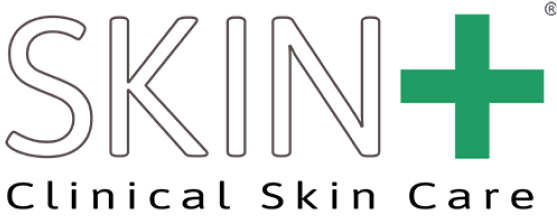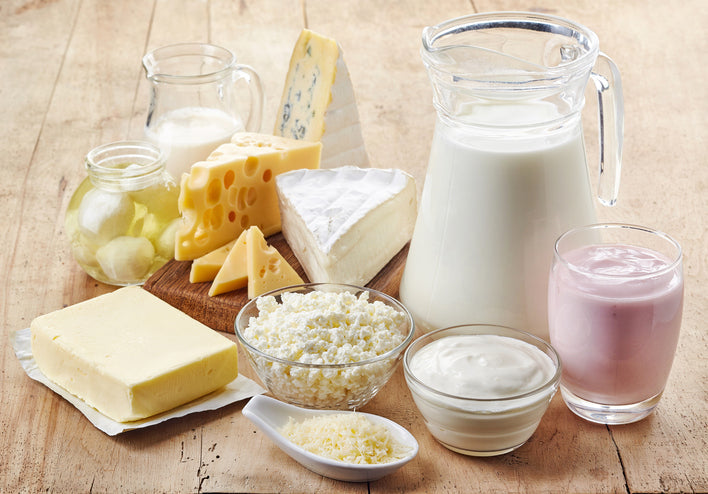As estheticians who specialize in clearing acne, this topic can be downright frustrating. Many clients sit in our chair after being told by doctors that diet has nothing to do with acne. Then we watch, up close, what happens when acne-prone clients cut dairy products: acne breakouts calm down; when they bring milk products back, they get acne outbreaks—sometimes within days. If you’re not acne-prone, you may never see a reaction; but for those with acne-prone skin, dairy can be like adding fuel to a slow-burning fire. The good news is that recent studies and current evidence are finally exploring a possible link between dairy and breakouts—especially in young adults and those with adult acne—and more healthcare providers are paying close attention.
Below, I’ll explain the “why,” translate the science around IGF-1/igf-1 levels, growth hormone, Dehydroepiandrosterone (DHEAS), insulin spikes, and what this means for skin health. We’ll also look at milk allergies & lactose intolerance, which is not the same as dairy-triggered acne, plus practical strategies—like trialing a dairy-free diet or a low-glycemic diet—that can support clear skin alongside proven topical treatments and, when needed, prescription treatment.
Why Dairy Shows Up in Acne Stories So Often
When clients ask about dairy intake or dairy consumption, they’re usually talking about cow's milk (and yes, “cow’s milk” with the curly apostrophe too), yogurt, cheese, and whey-based shakes. Here’s why these dairy foods may influence acne development and acne formation, especially in those with a genetic tendency toward acne vulgaris:
-
IGF-1 and Growth Hormone
Cow’s milk naturally carries IGF-1 and signals the human body in ways that can raise igf-1 levels. It also reflects the biology of milk production in dairy cows, which is sometimes augmented on dairy farms (e.g., historical use of recombinant bovine growth hormone in certain types of cow and regions). Elevated IGF-1 is associated with high levels of sebum-producing hormones, increased oil production in sebaceous glands, and faster turnover of dead skin cells—all ingredients for clogged pores and worse acne. -
Insulin & the Glycemic Side of the Story
Dairy can influence insulin levels and contribute to insulin spikes, which act on androgen pathways and sebum-producing hormones. That’s why the glycemic index conversation matters too. Diets heavy in white bread, white rice, sugary drinks, fast foods, snack foods, potato chips, french fries, and other items with high sugar content or added sugar can raise blood sugar and insulin, amplifying hormonal signals tied to acne. A shift toward a low-glycemic diet and a generally balanced diet may help lower that hormonal pressure. -
Milk Proteins: Whey & Casein
Whey protein and casein proteins (common in shakes and many milk products) are frequently noted in recent research and small studies as potential contributing factors in acne. Many clients report that whey shakes “light up” their breakouts even when other foods don’t. -
Skim vs. Whole: Not All Milk Acts the Same
Interestingly, skim milk and low-fat milk show a significant association with acne more often than whole milk or full-fat milk in recent studies. Hypotheses include differences in protein fractions and how processing changes hormonal signaling. That doesn’t make full-fat dairy a free pass, but it suggests low-fat dairy may play a significant role for some people. -
Hormones, DHEAS, and PCOS
Hormone levels matter. DHEAS (a precursor androgen) and hormonal fluctuations—as seen in polycystic ovary syndrome—can prime the skin for hormonal acne. When you stack those hormonal tendencies with dairy-induced insulin spikes and igf-1 levels, the total load can nudge pores toward inflammation.
But What About Allergies or Lactose Intolerance?
Milk allergies & lactose intolerance are different topics. An IgE-mediated milk allergy can create rashes and systemic skin issues, while symptoms of lactose intolerance (gas, bloating, GI distress) reflect difficulty digesting lactose. These are not the direct cause of acne, but the inflammation they generate can amplify skin concerns. Translation: you can be lactose intolerant without acne; and you can get dairy-triggered acne without being lactose intolerant.
“I Don’t Break Out—Does Dairy Still Matter for Me?”
If you never get pimples, dairy may never be your cause of acne. Many skin-resilient skin types tolerate dairy foods just fine for a long time. The pattern we observe is that those with acne-prone skin—including teenage acne and adult acne—often notice a flare when they regularly drink glasses of milk, add whey shakes, or increase cheese/ice cream. The takeaway is individualization: the same food group can land differently on different bodies.
What the American Academy of Dermatology Says
The american academy of dermatology acknowledges current evidence that diet can influence acne for some people, with recent research pointing to low-glycemic diet benefits and associations between dairy—especially skim milk—and acne. Is there a definite answer for everyone? No. But there’s enough to justify a good idea: run your own structured experiment and see what your skin tells you.
Building Your Personal Experiment (4–6 Weeks)
Try this plan if you suspect a dairy link:
-
Define the Trial
Commit to a dairy-free diet for 4–6 weeks. That means pausing cow's milk/cow’s milk, cheese, yogurt, whey and casein proteins. Replace with coconut milk or nut-based milk alternatives (unsweetened to keep the glycemic index low). -
Control Other Triggers
During your trial, reduce sugary drinks, white bread, white rice, fast foods, snack foods, potato chips, and french fries—the “glycemic gang.” Keep added sugar modest. This helps isolate dairy’s role by reducing insulin-related noise. -
Mind the Non-Food Confounders
Don’t forget hair products that can clog along the hairline, heavy makeup, or comedogenic balms. Acne is multifactorial; removing a contributing factor is good, but you’ll get the clearest read if you manage the rest too. -
Support with Skin Care
Use topical treatments that are proven for acne, like benzoyl peroxide and salicylic acid, to reduce bacterial load, calm inflammation, and keep pores clear of dead skin cells. If you have severe acne, ask us about treatment options.. -
Track & Reintroduce
Journal your routine, breakouts, and diet daily. After 4–6 weeks, reintroduce dairy methodically. Try one serving of whole milk, full-fat milk, low-fat milk, or skim milk on different weeks. Note any acne outbreaks, oiliness, or changes in skin conditions. This is the fastest way to discover your personal possible causes and specific foods that push you to a higher risk of worse acne.
Where “Sugar” and “Chocolate” Fit
People often ask about sweets and dark chocolate. Cocoa itself isn’t the villain; it’s usually the high sugar content or dairy additives that accompany chocolate. If you want a square, choose a dark bar with minimal added sugar and no milk solids. Keep the serving small and fold it into a balanced diet.
What About Vitamins and Fats?
Vitamin E and other antioxidants support general wellness, but vitamins are not a cure-all for acne. Similarly, fatty acids (like omega-3s) can be supportive for inflammation balance, yet they won’t neutralize hormonal signaling from dairy or insulin. Think “both/and”: nourish the human body well and manage triggers.
Skim Milk, Low-Fat Dairy, and Why They’re Often Flagged
Why do skim milk and low-fat dairy show stronger links than whole milk in recent studies? Leading hypotheses include:
- Different protein fractions in low-fat milk may change hormonal signaling.
- Processing steps can alter bioactive components.
- People often consume low-fat milk in larger volumes, which increases exposure.
None of this means whole milk or full-fat milk is universally safe; it just highlights patterns seen in the data. Your skin’s response is the final word.
DHEAS, Hormonal Changes, and Real Life
Hormonal changes—puberty, menstrual cycles, postpartum shifts, stopping or starting the contraceptive pill, polycystic ovary syndrome—can all nudge acne upward. If you add frequent dairy on top of those fluctuations, you may stack enough signals to tip skin into acne breakouts. Many clients describe this as “I was fine for a long time, then suddenly, every latte showed up on my chin.” That’s how hormonal acne often behaves.
Lactose-Free Milk or A2 Milk: Are They Different?
Some clients tolerate lactose-free milk better because it resolves GI symptoms of lactose intolerance—less bloating, less systemic stress. Others try A2 milk (a different beta-casein profile) and report fewer flares. There isn’t a single verdict across all skin types, but these trials can help you refine which types of cow (and processing methods) you tolerate better.
Athletes and Whey Protein
Whey shakes are convenient for recovery, but whey protein can be a problem for acne-prone folks. If shakes coincide with flares, test a switch to pea-, rice-, or egg-based proteins. Again, log doses and timing; patterns are powerful.
How Many Glasses of Milk Are “Too Many”?
There’s no universal threshold. Some people see changes with one to two glasses of milk daily; others react at lower exposures, especially if combined with high-glycemic meals. Your journal will show whether dose matters for you.
Practical Swaps and Meal Ideas
- Use coconut milk or nut-based milk in coffee, oatmeal, and smoothies.
- Choose unsweetened options to support a low-glycemic diet and steadier blood sugar.
- Pair carbs with protein/fiber to blunt insulin spikes.
- Build plates around veggies, lean proteins, and whole grains; this supports a truly balanced diet.
While dairy can play a role, clear skin doesn’t happen from diet alone. A regimen designed for your specific acne and skin type is non-negotiable. You’ll get the best, most consistent results by combining dietary adjustments with focused, evidence-based skincare:
Note: If you’ve recently changed hair products, makeup, or started new medications (including the contraceptive pill), factor that into your timeline; these can also be possible causes or amplifiers.
What About the Source of Dairy?
People often ask if dairy from pasture-raised dairy cows or smaller dairy farms behaves differently. The reality: individual responses still vary. Farming practices, breed (types of cow), feed, and processing may subtly shift hormone and protein profiles, but your skin’s week-to-week response remains the best compass.
When You Need More Support
If your flares persist even with a dairy-free diet and low-glycemic diet, or if you’re seeing worse acne with scarring risk, see a professional. The blend of diet, skincare, and medical therapies is highly individual. Healthcare providers can help interpret current evidence and map out topical treatments and treatments as needed.
Bottom Line
- Dairy is not “the” cause of acne for everyone.
- For acne-prone skin, there’s a credible possible link—especially with skim milk, low-fat milk, and whey protein—and stacking high-glycemic foods can magnify the effect.
- A structured 4–6 week test—combined with proven topicals like benzoyl peroxide and salicylic acid, and a balanced diet—is the quickest way to learn how dairy impacts your skin.
- Work with your esthetician and, when needed, your dermatologist; the american academy of dermatology recognizes that diet can matter for some people, even if there isn’t a universal definite answer.
Pore-Clogging Watchlist (for Acne-Prone Readers)
While you’re experimenting with diet, also avoid comedogenic ingredients in skincare and makeup. Good idea: run your products through our Skin+ Ingredients Checker to spot pore-cloggers fast.
A Note on Context and Nuance
Nutrition science evolves. Some data are small studies; others are larger cohorts. “Association” doesn’t prove causation, and even a significant association in a paper won’t dictate your personal response. That’s why your real-life trial—ideally guided by healthcare providers—matters most.
And finally, remember that acne is multifactorial. Genetics, hormonal changes, stress, sleep, skincare routines, environment, and even specific foods beyond dairy can all play a significant role. Dairy may be one contributing factor among many. If you want help designing a clean 4–6 week experiment—or need support with a product routine that complements your dietary approach—reach out. We work closely with acne every day, and we’ve seen what a thoughtful plan can do for skin health and confidence.


